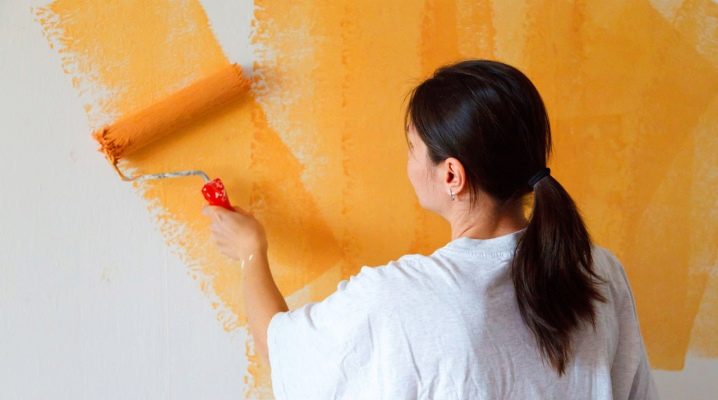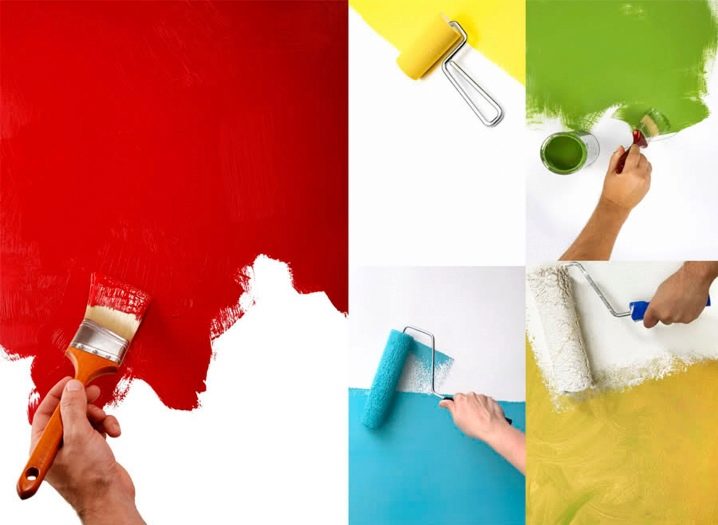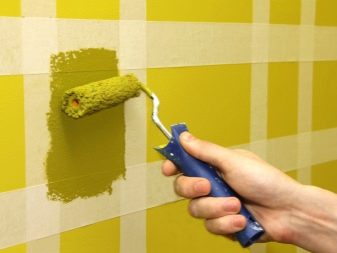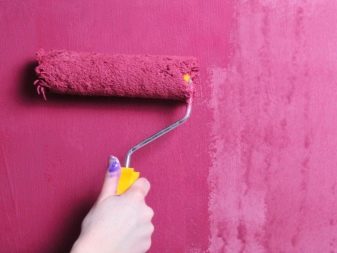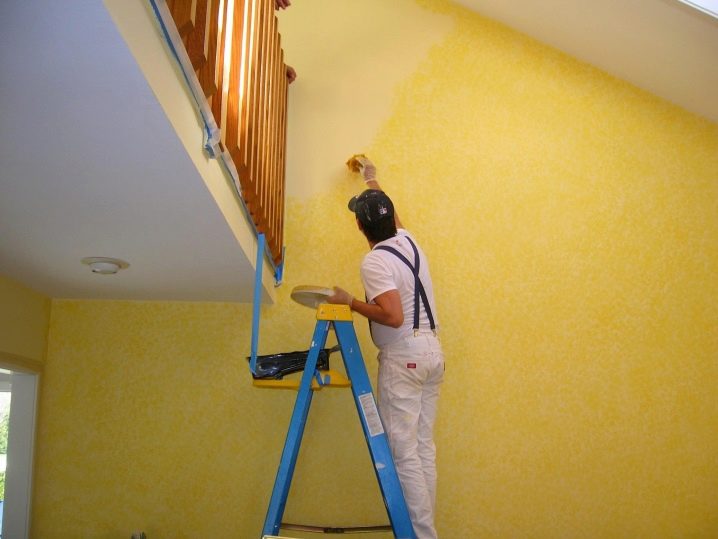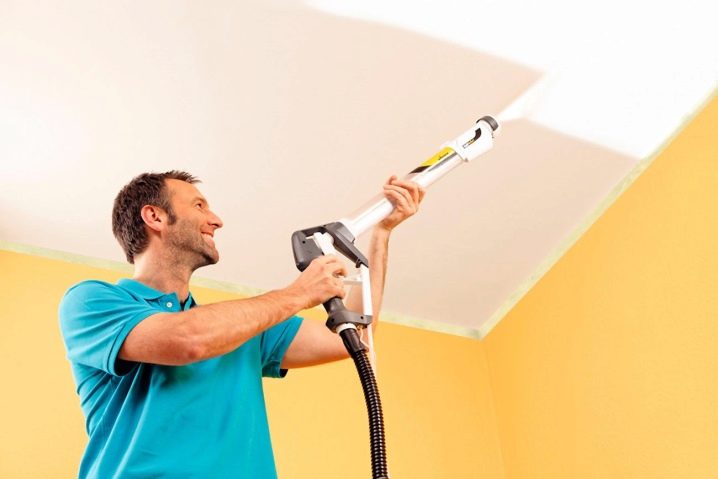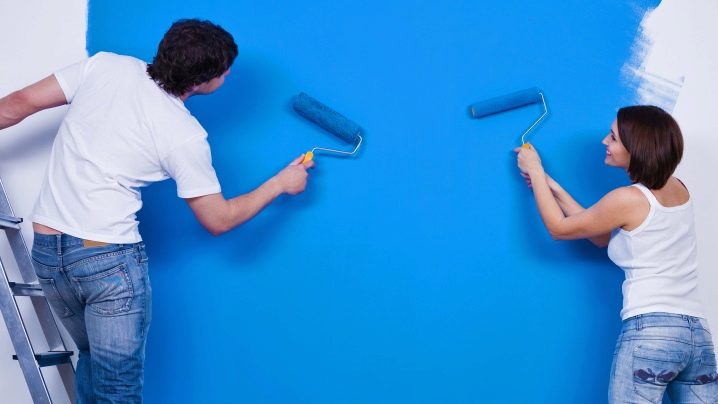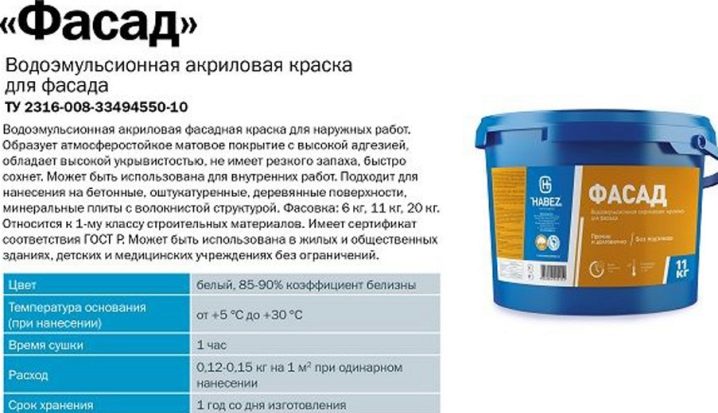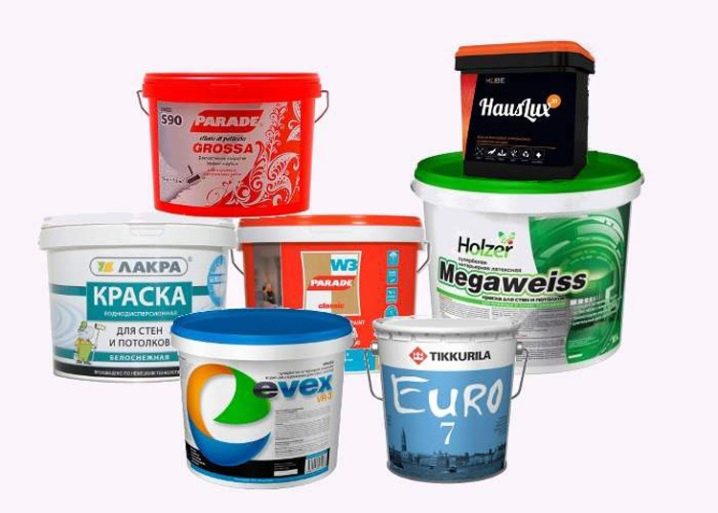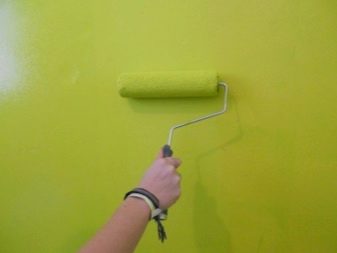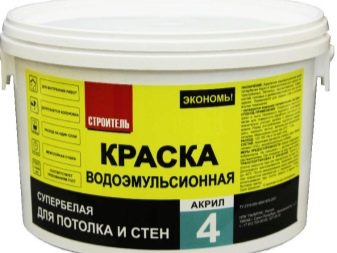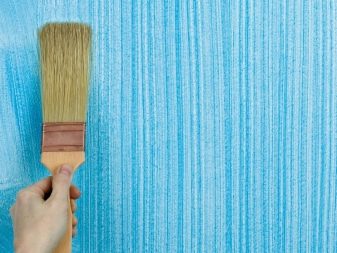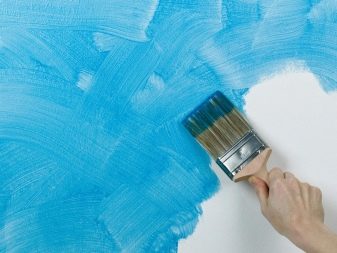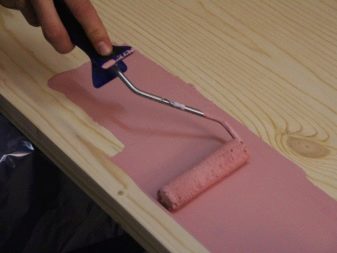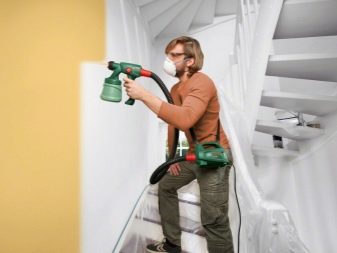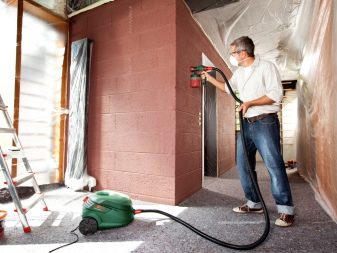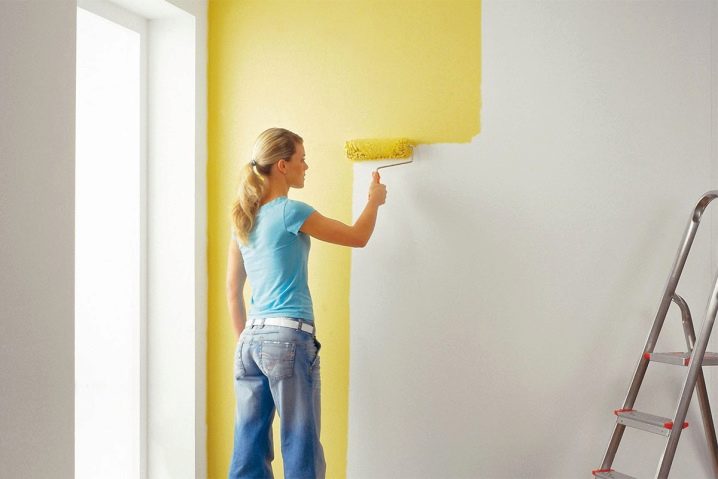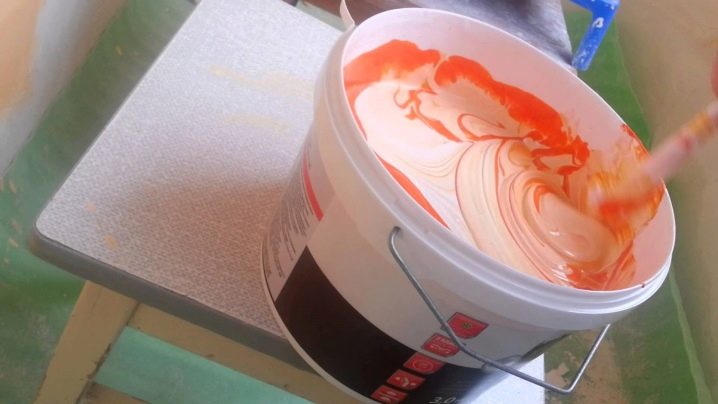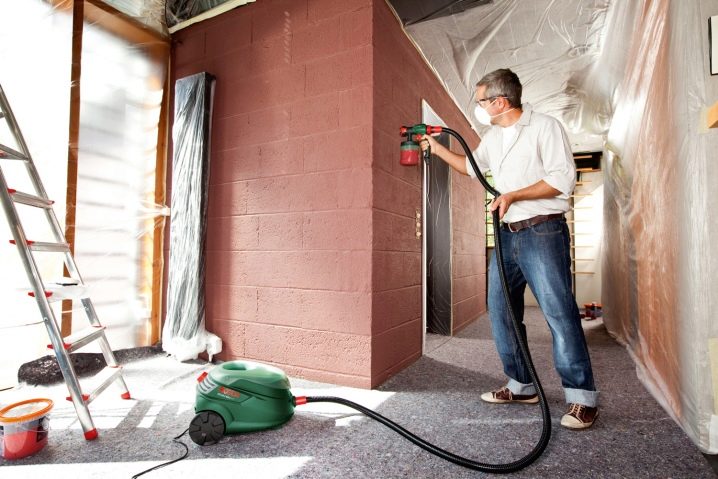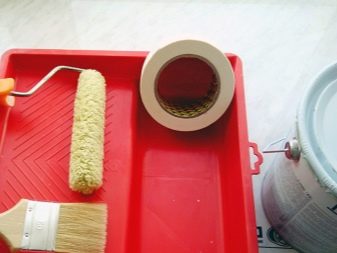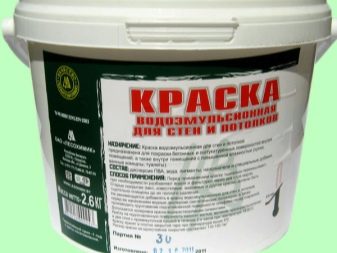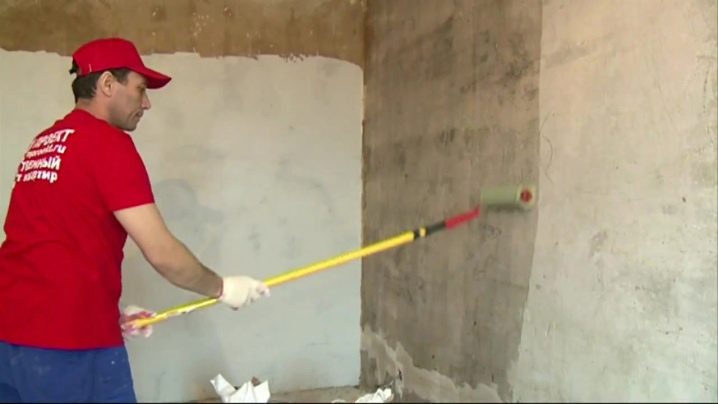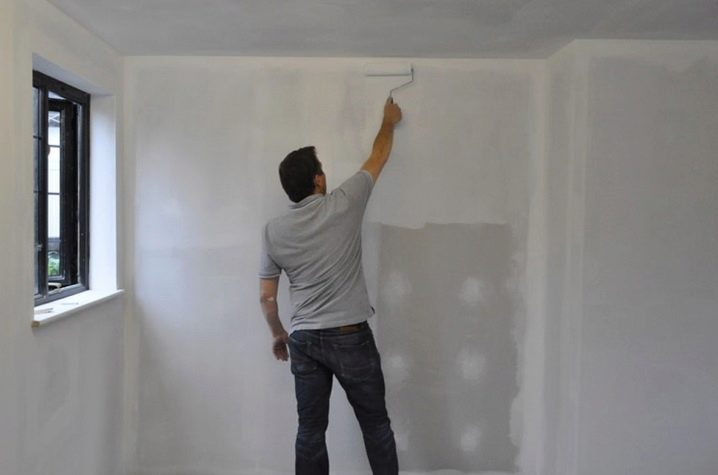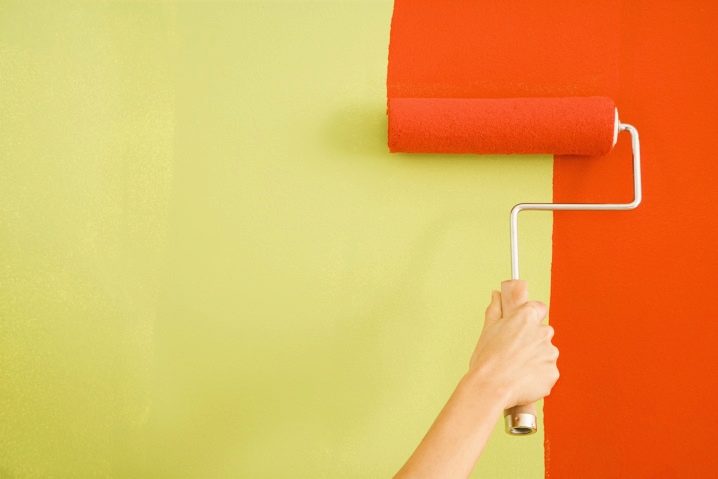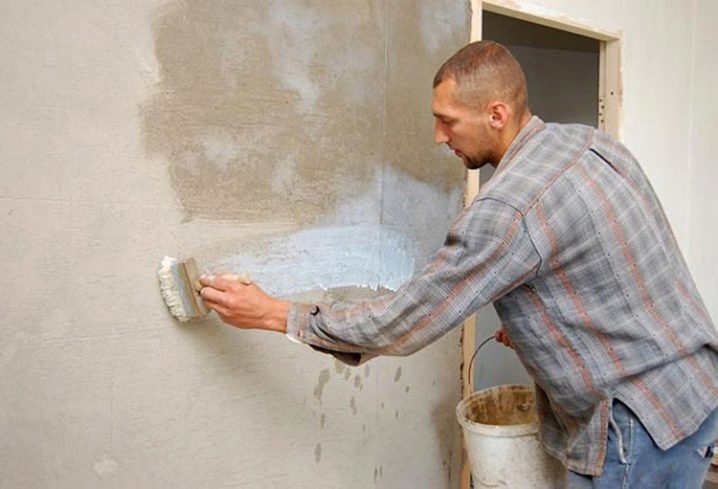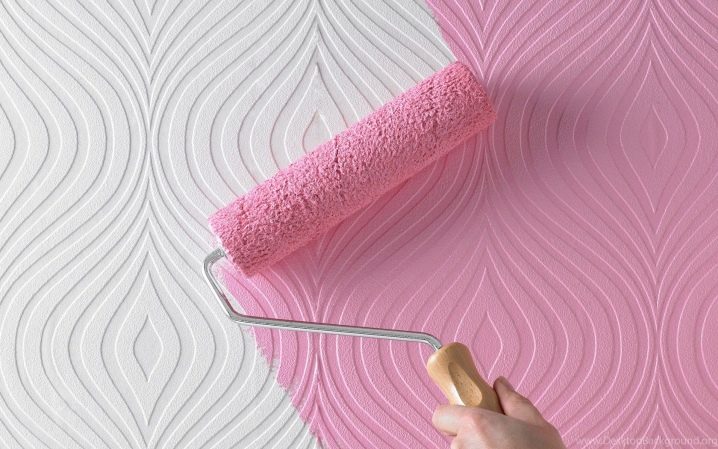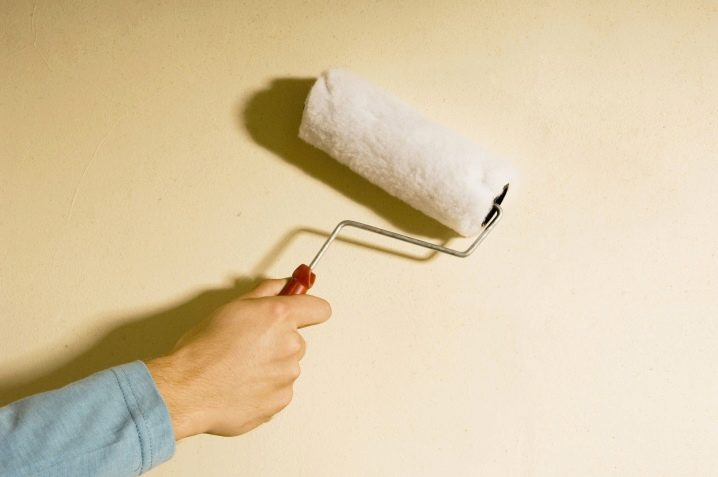Consumption of water-based paint per 1 m2
Water-based paints are used very often, because they are relatively inexpensive, are environmentally and sanitary-friendly, and do not give off strong odors. They also have a number of other advantages, but even such a perfect and convenient building material costs money. It is necessary to carefully calculate the real need for it, in order not to overpay and not re-buy it additionally during the repair process.
Special features
The tonality of water-based paint changes quite flexibly; you just need to add color to it. Special additives allow you to avoid delamination, cracking and burnout; the applied layer dries very quickly. Emulsion dye easily and comfortably falls on a variety of surfaces, even on the wallpaper; It is used to paint walls and ceilings.
Coverage of this kind is necessary for street and internal work. The paint is formed by a combination of water with specially selected pigments. When water evaporates, only substances “responsible” for color will remain on the surface. Ease of use, solid protective characteristics, excellent resistance to the action of moisture and ultraviolet - all this testifies in favor of water-based paint. Therefore, the calculation of its quantity is very relevant, an accurate account of all circumstances and factors.
Of great importance in calculating the actual need for paint is the state of the substrate (the previous layer). Any manufacturer always writes on the label and on the packaging, how much of the coloring composition needs to be spent to close 1 square. m surface. But all these figures relate only to ideal conditions, and with the usual repairs in an apartment or house it is not often possible to achieve the ideal.
Calculation technology
The consumption of a water emulsion per 1 m2 is also determined by the hiding power of the paint: if this parameter is high, it is sometimes possible with a pair of layers to completely cover the darker base. But there are cases in which it is necessary to paint three times or even more.When applying the first layer of 1 kg of paint can cover 4-5 m2, and when you paint a second time, the same amount will be able to paint from 6 to 9 square meters. m. Remember that rollers with a long pile (as well as any length of pile, made of foam rubber) somewhat increase the cost of the coloring mixture.
If we turn to the tables showing the consumption of water-based paints of different composition on thoroughly prepared surfaces, we get the following picture (consumption in layers per 1 square meter):
- Silicate varieties - 400 and 350 g
- Polyvinyl acetate - 550 and 350 g
- Silicone - 300 and 150 g.
- Acrylic - 250 and 150 g.
- Latex - 600 and 400 g
But it should be remembered that each manufacturer has its own recipe, technology, tolerance spread is also different. And although acrylic paint for interior work is unlikely to be more expensive than latex or polyvinyl acetate, but a difference of 10-15% compared with table values is quite likely.
Useful tips:
- The hiding power of water-based paints is closely related to the indoor climate. The best conditions are warming the air from 25 to 50 degrees, dryness in the room, relative air humidity maximum 80%.Pay attention to the porosity of the painted surface: the higher it is, the more you will have to use paint. It is advisable at any opportunity to use the spray gun, it allows you to reduce the consumption of ink mixture by 10% in comparison with a brush or rollers.
- Acrylic paints are not only more economical than others, but also have a long service life, have an excellent level of protection and are relatively inexpensive. If you do not want to consult with experts before buying paint or decide to check the calculations of consultants, repairmen, online calculators will come to the rescue. They indicate the type of ink mixture, the type of surface, the number of layers and the intended tool.
- Working with a brush, do not make sweeping movements, it is better to spend a little more time, but do not lose valuable material in the form of splashes.
- When painting, press on the tool evenly so that all layers are formed of the same thickness. The consumption rate of color varies according to the specific tone and specificity of the room. Coloring starts with the preparation of the base, to which the color is added in a few drops.Every time after adding a regular portion, the composition is stirred until complete homogeneity, otherwise the resulting color may not look the way you expect.
- If you have to paint a tree, paint consumption should be considered the greatest. The state standard always mentions a nominal value that is equal to the flow rate when painting a clean, prepared concrete surface. A little more than the nominal amount goes when painting drywall sheets and structures. It is best to paint the metal, it is the most profitable base material.
- It should be noted that profitability is not the only important indicator when choosing a tool for painting. The brush and roller allow you to achieve relatively high quality, and if you need to paint narrow, hard-to-reach places, you will not have a special alternative. The aerosol method of applying the most rapid, but the cost of paint is very high, and at the slightest mistake the quality of the layer will be unsatisfactory.
Try not to paint in the heat, the more water evaporates immediately, the more material you need to add to make up for the loss.But the humidity of the air, if it does not exceed the optimal value, on the contrary, allows to reduce the consumption of the coloring material.
- Waterproof paint can not be used at temperatures below zero, attempts to add antifreeze and circumvent this restriction bring only harm. Although the minimum air temperature, according to the assurances of individual manufacturers, can be +3, it would be more correct not to risk and work at least at +5. Then you definitely do not ruin your work and do not spend paintwork material in vain.
Remember: even the most trained professionals using water-based paint consciously take into account the error in calculations of 5-7% simply because it is impossible to take into account and predict all the factors.
- Emulsion paint based on PVA glue is very weakly susceptible to moisture, able to reliably protect the drywall from it. But if in some place the vapor is continuously concentrated, the coating inevitably swells and collapses. First of all, this paintwork material is used in industrial and other non-residential premises. You can reduce paint consumption by diluting it a little with water.Be careful, excessive dilution will lead to loss of decorative properties.
- In order not to spend a liter per liter, be sure to ground the cement walls, otherwise you not only spend a lot of paint, but also increase the risk of cracking. Never save on finishing putty; When painting over the starting putty, you just waste a lot of material. As far as possible, do not use water-based paint compositions for processing walls covered with fabrics, unless this is provided by the design project.
- Porous materials (such as polystyrene foam) are preferably first primed with a mixture of acrylic primer and water in equal proportions, after which they apply a diluted polyacrylate paint. This solution ensures reproduction of the initial structure of the material and reduction of the dye consumption.
There are several nuances that can reduce the cost of paint to a reasonable value:
- Do not use a uniform thick layer (diluted with water, adding PVA glue and creating several thin layers where more practical).
- Each subsequent coat of paint is applied approximately 60 minutes after the previous one.
- To reduce the absorption of the lowermost layer helps primer or other reinforcing composition.
Water-based paint is applied not only on smooth walls and other coloring compositions, quite often they are used for wallpaper for painting. The average consumption is 1 liter for 8-11 square meters. m (depending on the specific material and other conditions).
Important: if the wallpaper is painted in light colors, usually one layer is enough, and only two or even three layers help to give them a dark color, depending on the saturation of the target tone. Before starting work, prepare a small portion of paint and grease it with an inconspicuous area. This will allow you to assess whether the required amount of color is calculated correctly.
For a few tips to follow when painting with water-based paint, see the video below.
